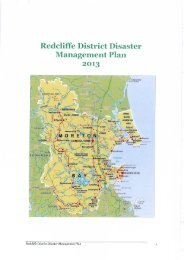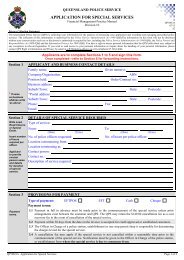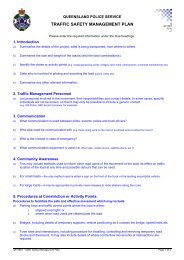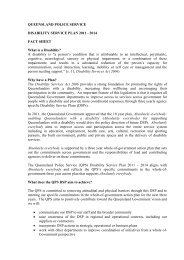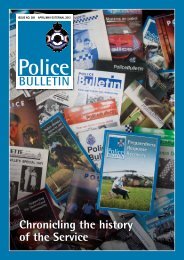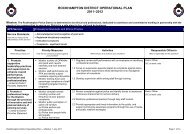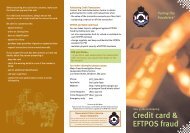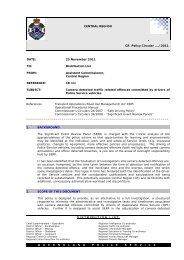2008 Annual Report - Queensland Police Service - Queensland ...
2008 Annual Report - Queensland Police Service - Queensland ...
2008 Annual Report - Queensland Police Service - Queensland ...
You also want an ePaper? Increase the reach of your titles
YUMPU automatically turns print PDFs into web optimized ePapers that Google loves.
Carbon emissions<br />
The QPS is committed to the <strong>Queensland</strong> Government’s<br />
Environmental Protection (Waste Management) Policy<br />
2000 and ClimateSmart 2050, which aim to reduce the<br />
Government’s carbon footprint. Six gases have been<br />
identified under the Kyoto Protocol as the main gases<br />
that need to be accounted for. These gases are carbon<br />
dioxide, hydrofluorocarbons, methane, nitrous oxides,<br />
perfluorocarbons and sulphur hexafluoride. As part of<br />
standard emission accounting practices these gases are<br />
reported as carbon dioxide equivalent emissions (CO²-e).<br />
The <strong>Queensland</strong> Government is developing wholeof-Government<br />
systems to standardise reporting on<br />
carbon emissions (measured in CO² equivalents). The<br />
basis for this reporting is consistent with national and<br />
international standards, including definitions outlined<br />
in the AS Standard ISO 14064 and the Australian<br />
Government’s National Greenhouse Accounts Factors<br />
workbook, as detailed below:<br />
In 2007-08 all <strong>Queensland</strong> Government agencies are<br />
reporting on the carbon emissions from:<br />
• fuels used by vehicles<br />
• purchased electricity<br />
• domestic air travel on commercial airlines.<br />
The <strong>Queensland</strong> Government is committed to continuing<br />
to improve data collection methods and reporting<br />
carbon emissions in line with national and international<br />
standards. While the best available data has been<br />
used, in some instances estimates have been reported<br />
due to the limitation of data collection systems. For<br />
example, in government-owned buildings where there<br />
are multiple tenants and the electricity usage cannot be<br />
attributed to a single agency, the Department of Public<br />
Works calculates the electricity usage by tenanted<br />
agencies based on the m² leased.<br />
Scope 1<br />
Scope 2<br />
Scope 3<br />
emissions that occur from sources that are<br />
owned or controlled by the company (e.g.<br />
emissions from departmental controlled<br />
vehicles, diesel generators, gas boilers etc.)<br />
emissions are classed as indirect emissions<br />
solely from the generation and consumption<br />
of purchased electricity or steam or heating/<br />
cooling. Scope 2 emissions are physically<br />
produced by the burning of fuels (coal,<br />
natural gas, etc.) at the power station or<br />
facilities not controlled by the organisation.<br />
emissions are the result of actions of a<br />
company, but occur from sources not<br />
owned or controlled by the company. Their<br />
inclusion should be based on their relevance<br />
to the operations of the organisation.<br />
More broadly, scope 3 emissions can include:<br />
• employee business travel (in vehicles or aircraft not<br />
owned or owned by the reporting organisation)<br />
• employees commuting to and from work<br />
• extraction, production and transport of purchased<br />
fuels consumed<br />
• extraction, production and transport of other<br />
purchased materials or goods<br />
• generation of electricity that is consumed in a<br />
transport and delivery system (reported by end user)<br />
• out-sourced activities<br />
• transportation of products, materials and waste.<br />
Corporate Resource<br />
Management<br />
With honour we serve 75




